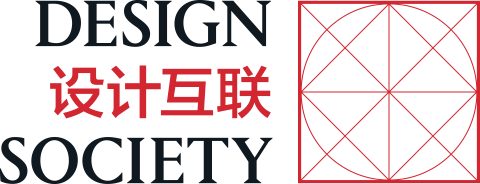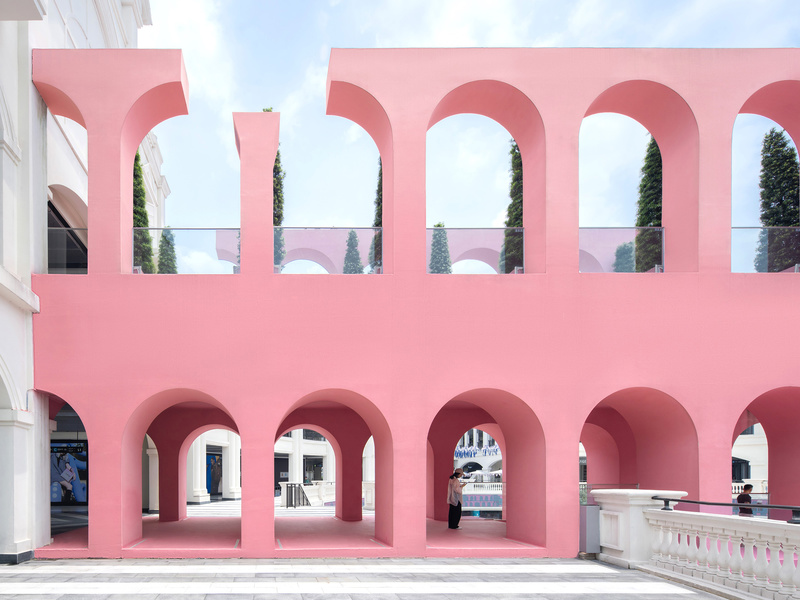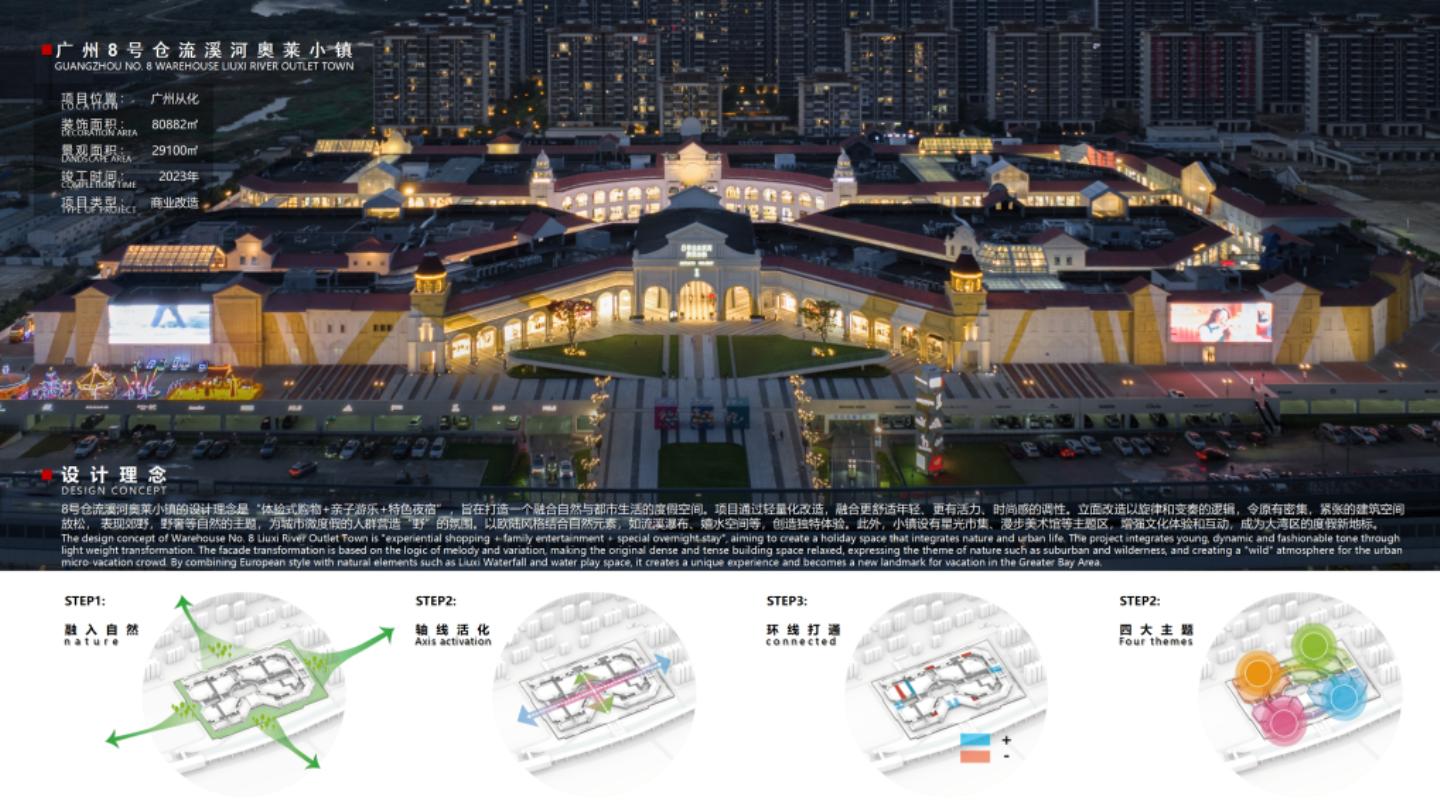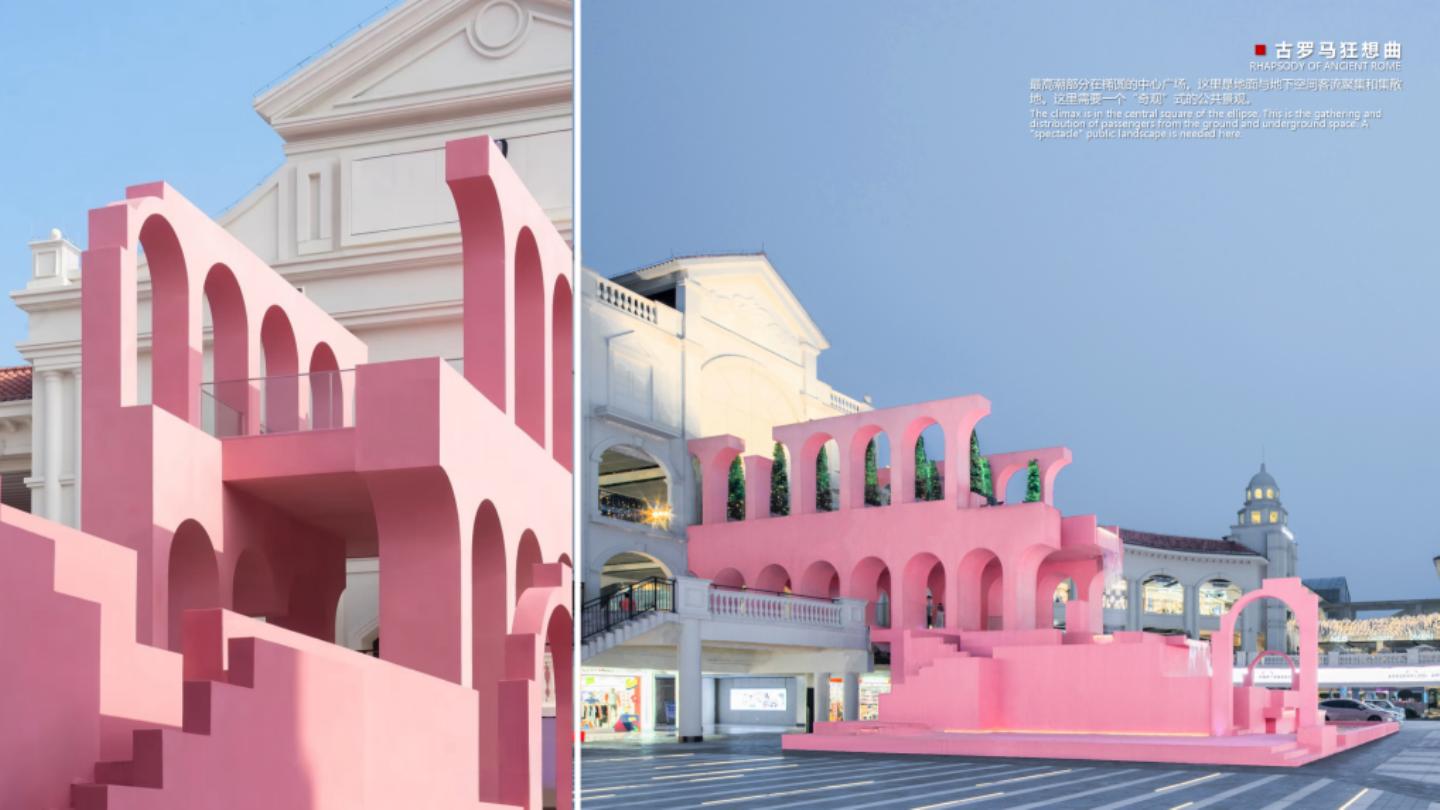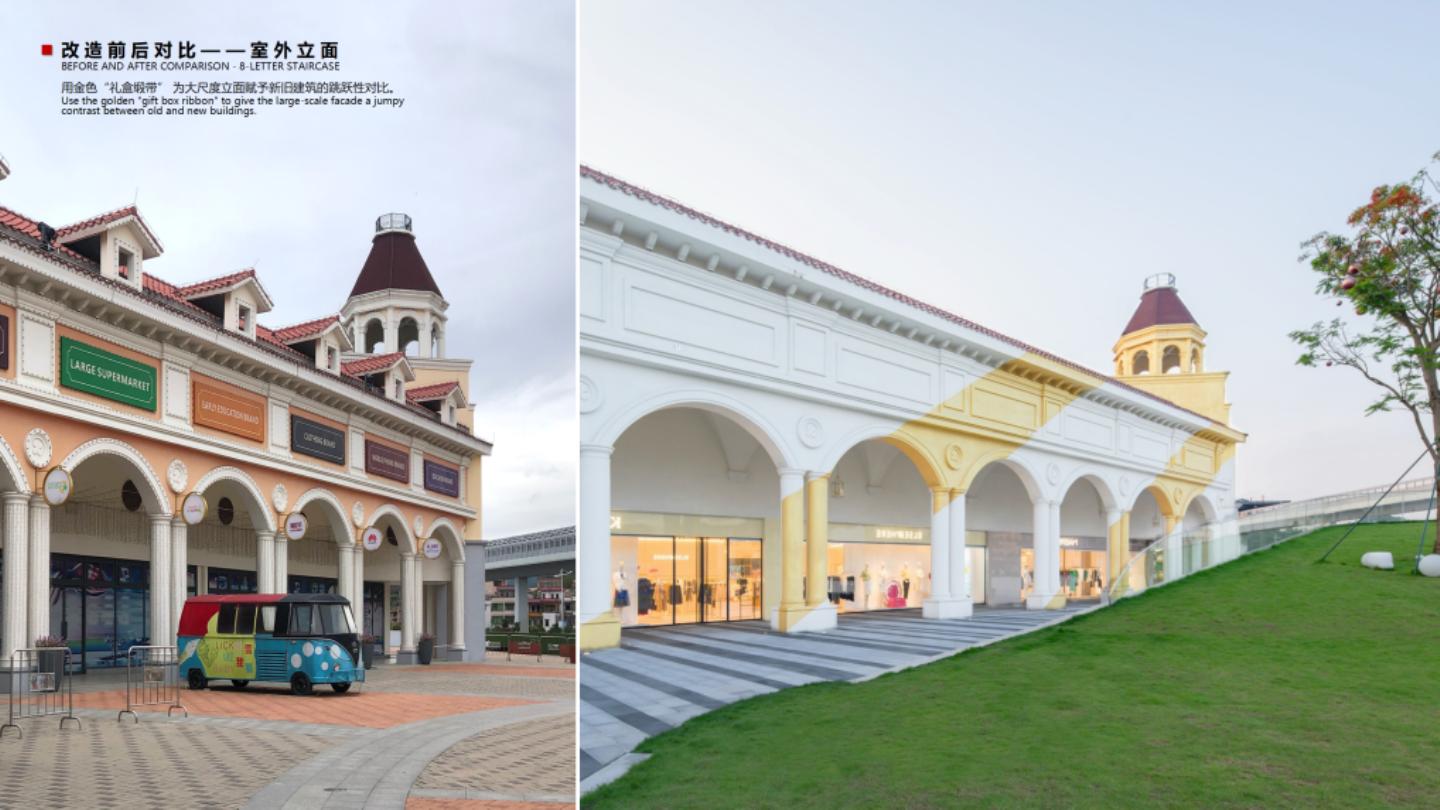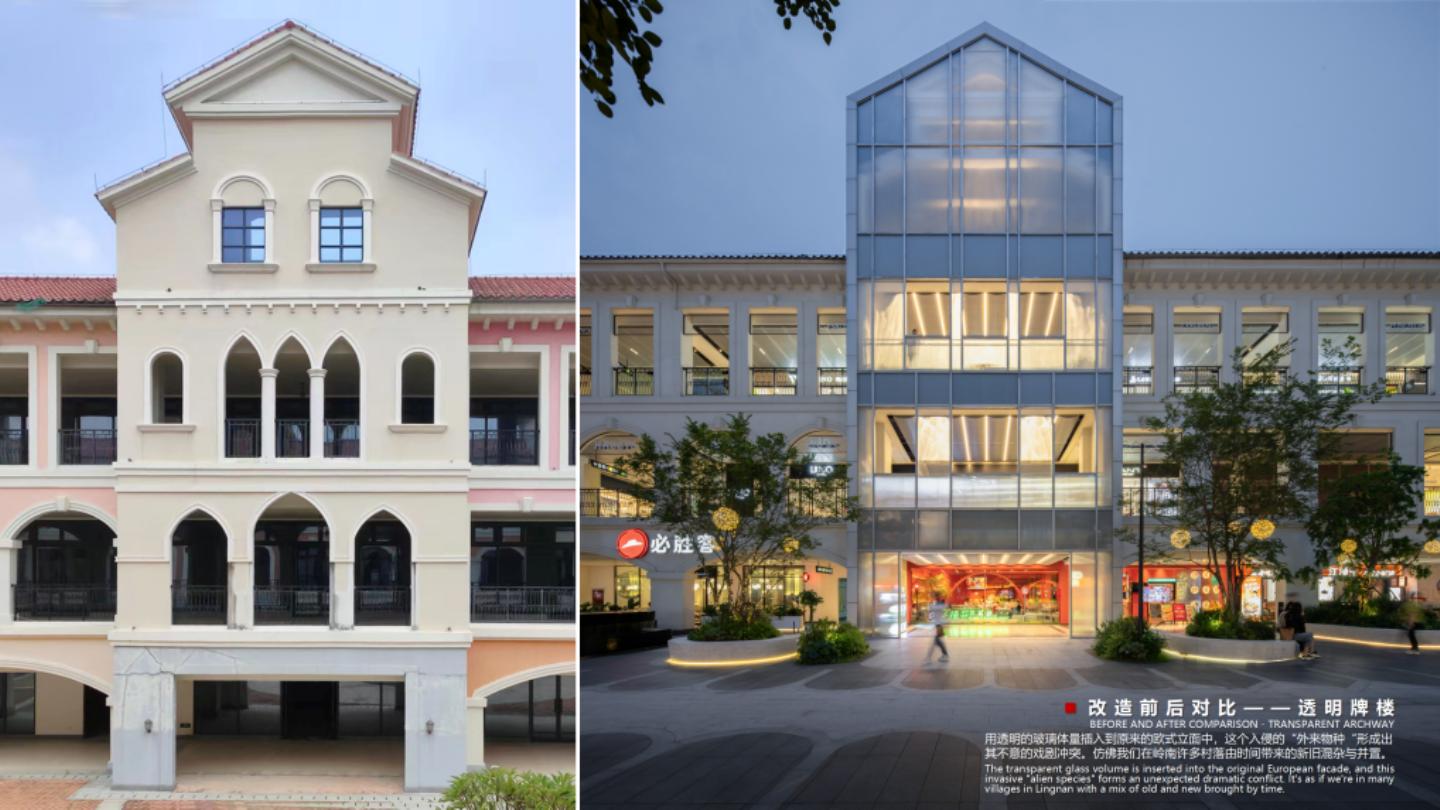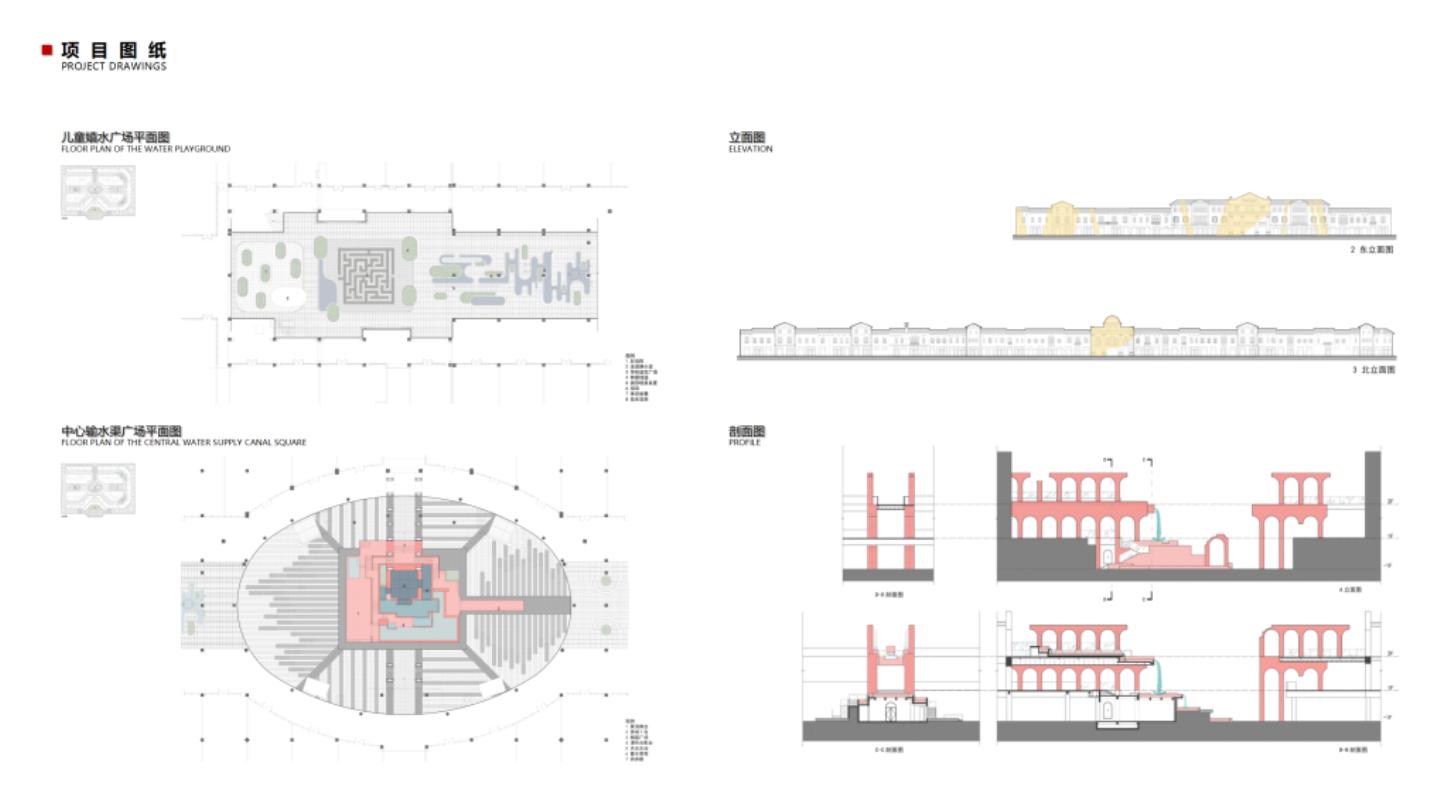Main texts of Olay Town, Warehouse 8, Guangzhou
The main text briefly describes the basic information and design concept of the project, and shows the biggest highlights of the two projects, the ancient Roman square and the water maze paradise.
Guangzhou 8 Warehouse Ole Town Additional Text
Additional text shows pre-and post-retrofit comparisons and project drawings.
Ancient Roman Fanasy-Water Canal
The climax is in the central square of the ellipse. Here is the ground and underground space passenger gathering and distribution center. There needs to be a public spectacle.
The large sinking square of 3000 square meters, referring to the magnificent ruins of the ancient Roman city wall, imitates the pink ancient Roman city wall and integrates the design of cascading waterfalls, which represents the endless and continuous flow, and is the source of water for the whole waterscape.
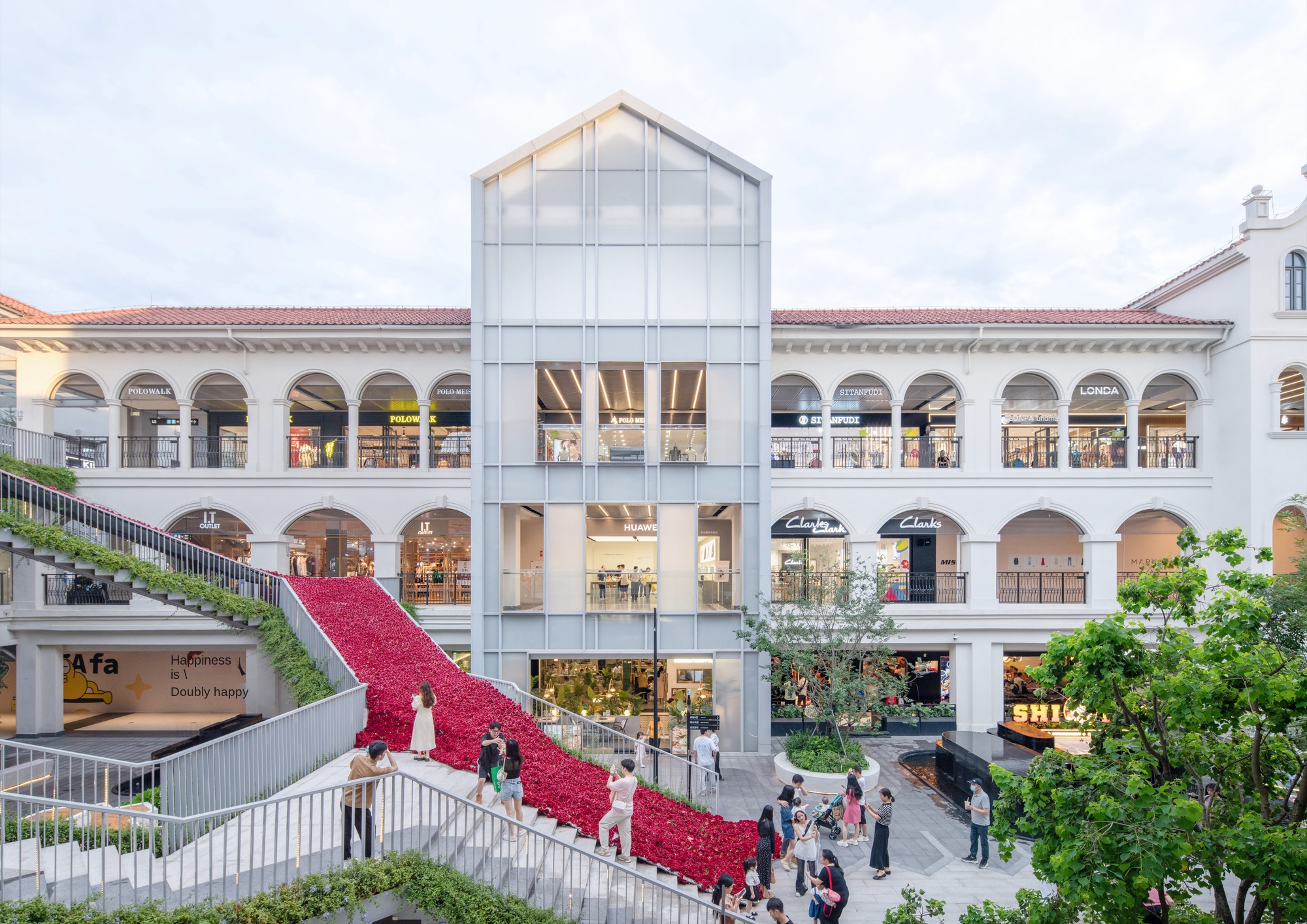
Garden Walk -8 Stairs and Moore's Garden
Full of futuristic and modern sense, the 8-character staircase has different angles and different structures and different interpretations. Material symbols and spiritual symbols collide here to outline a plump image. Walking among them, you can feel the ephemeral eternity, the interlacing of spaces, the freshness and nature brought by black and white buildings and dense green plants. This can be a stage, a show, and a space to show charm.
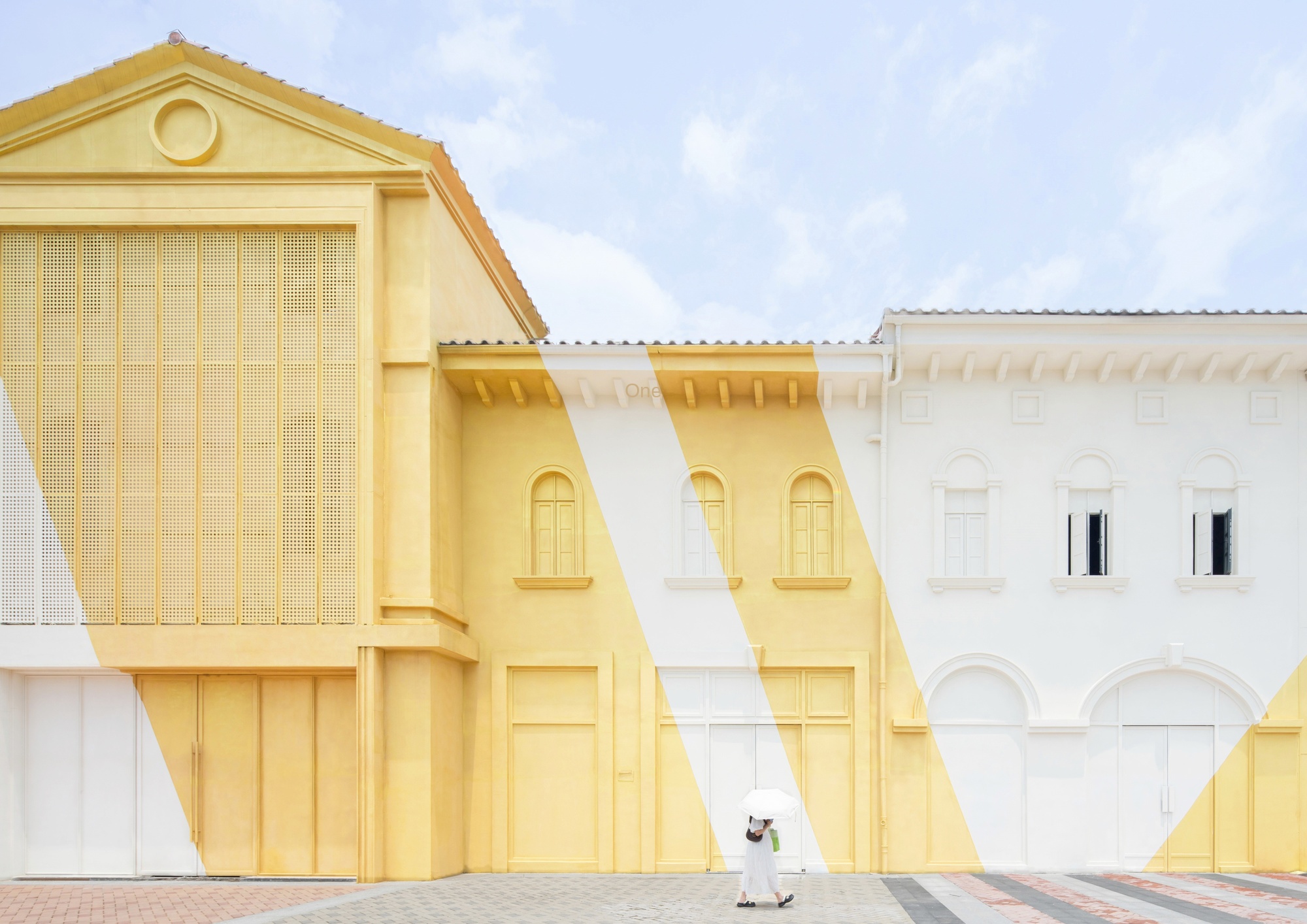
Gold Variation-Ribbon Facade
The golden variation along the street facade creates an image of the city's arrival to the subway station and expressway. The golden "gift ribbon" is used to give the large-scale facade a leaping contrast between the old and the new. And along the entrance lobby of the canopy extends to the central axis.
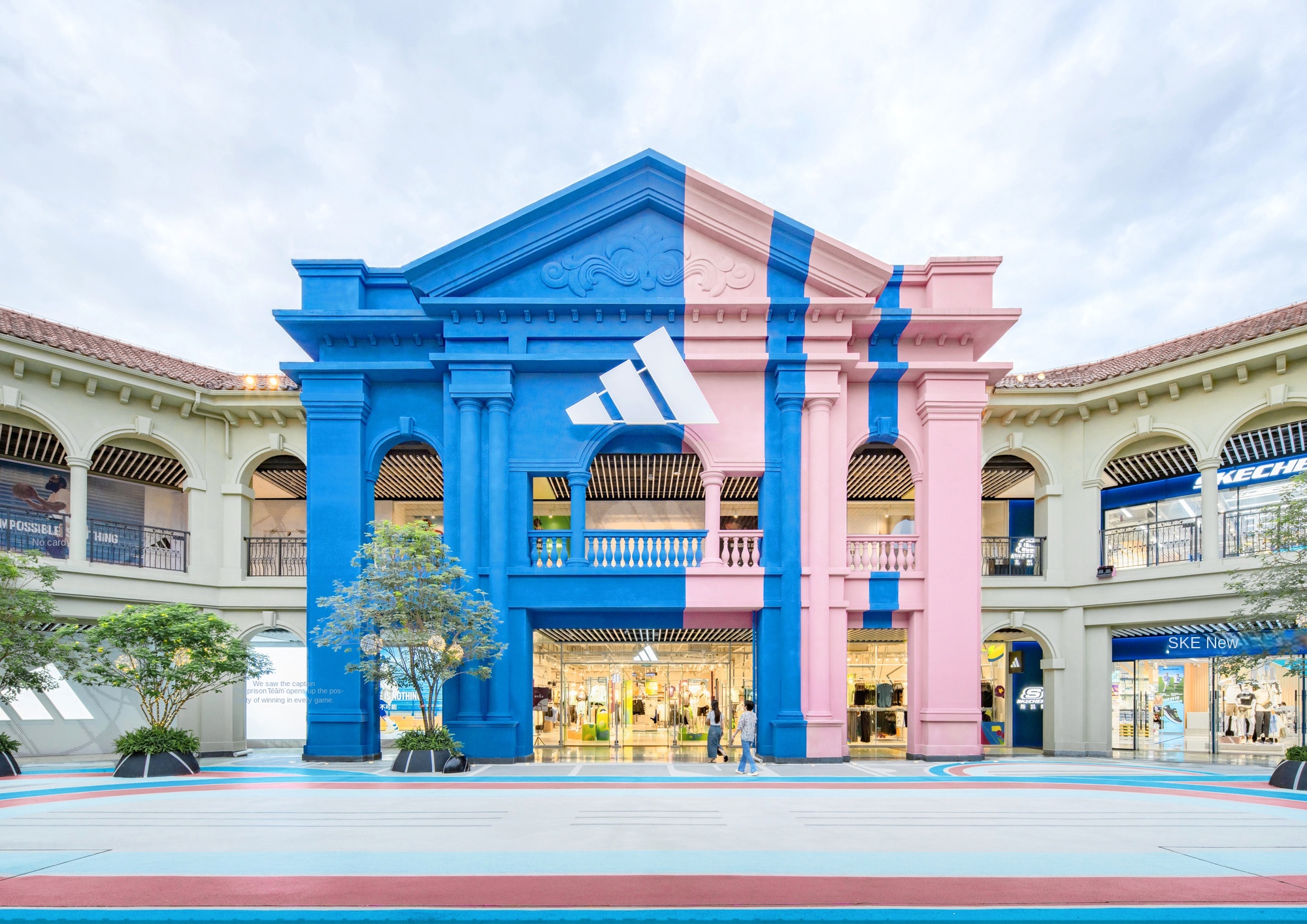
Blue Variation-Sports Block
The sports block refreshes the old European-style door head with cheerful blue. The bright color is jumping and dynamic, breaking the dullness and regular of the original building. It's an expression of wild interest, wild luxury, and wildness.
It is an unexpected contrast and surprise. It is full of interest and imagination for the young people in the surrounding colleges and universities and the family of Guangzhou vacationing parents.
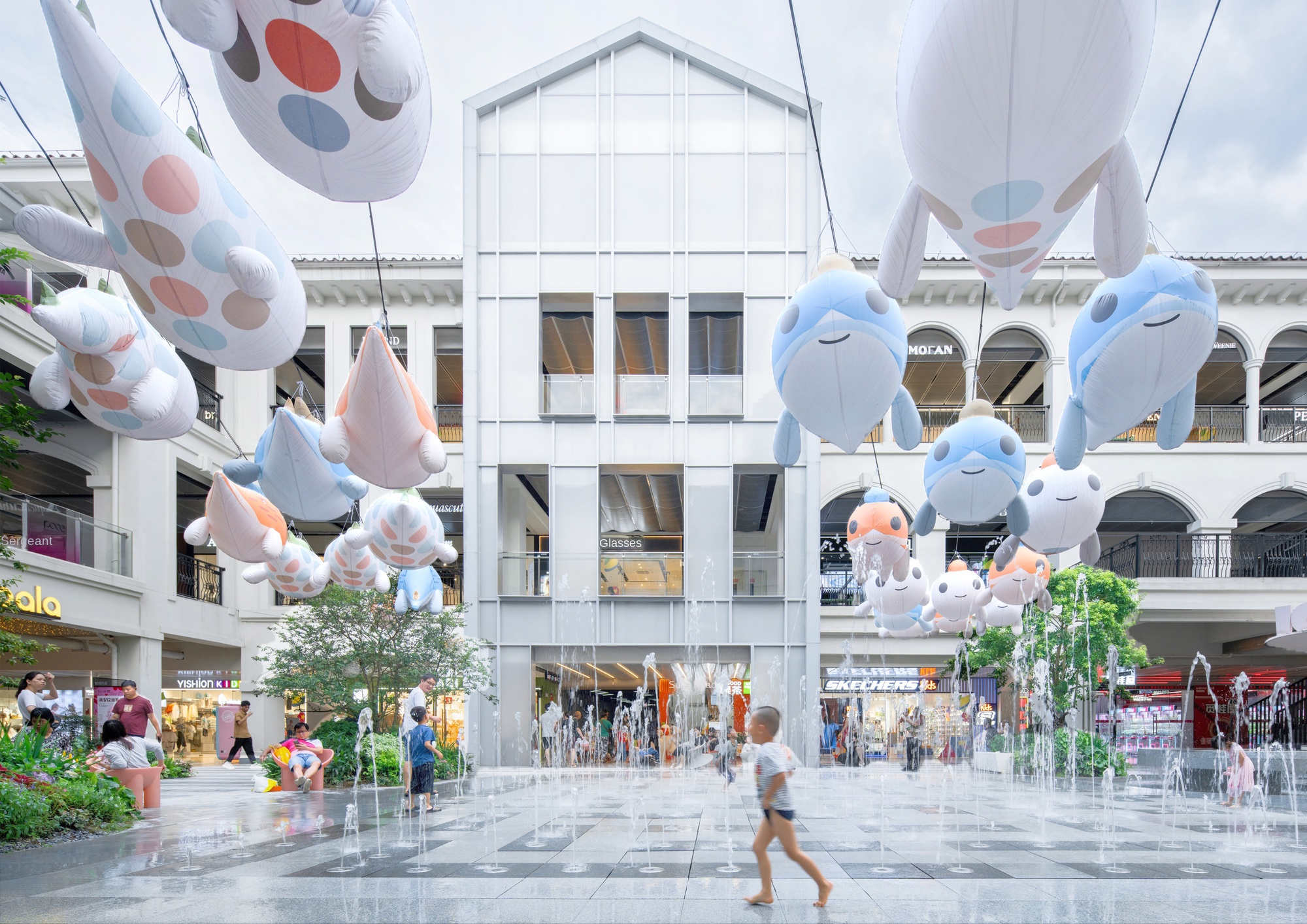
Happy Water, Watching Water, Hydrophilic-Dry Spray Maze Square
The landscape design deeply excavates the water culture of Liuxi River, takes water as the core element throughout the whole project, combines the interactive and experience elements such as "happy water", "water viewing" and "hydrophilic", and strives to create a space full of interest and ecological experience.
The design concept of Olay Town, Liuxi River, Cang 8 is "Experiential Shopping Parent-Child Amusement Featured Night Stay", which aims to create a holiday space that combines nature and urban life. Through lightweight transformation, the project integrates more comfortable, young, more dynamic and fashionable tonality. With the logic of melody and variation, the facade transformation relaxes the original dense and tense architectural space, expresses the natural themes such as countryside and wild luxury, and creates a "wild" atmosphere for the people on micro-vacation in the city. European style combined with natural elements, such as stream waterfall, water space, create a unique experience. In addition, the town has theme areas such as Starlight Market and Walking Art Museum to enhance cultural experience and interaction, and become a new holiday landmark in the Greater Bay Area.
The rapid changes in China's commercial market are rare in the world. So is commercial design necessarily superficial or sensitive to life? Is it possible to translate the local people and consumption habits in terms of culture and space, and make them become commercial blessing? Cultural issues in business have always been our concern. Commercial buildings are rapidly changing and highly sensitive to the market. The constant strategy in this ever-changing subject is the study of the local properties of business. Every successful business must be a successful urban space, and its inclusiveness has become the most critical cultural background in Lingnan, and it is also the connection point and breakthrough point between business logic and architectural cultural logic.
1. Architectural features: on the base of the original European style street, through the facade transformation, the use of uniform simple color matching, to maintain a clean and fresh visual experience, while integrating the rich tolerance of Lingnan architecture, to provide interesting clues and cultural background.
2. Innovation of micro-vacation business model: 8 Cang Liuxi River Ole Town, as an urban micro-vacation business project, meets the post-epidemic era consumer demand for cost-effective goods and vacation-style consumption, providing a leisure option away from the hustle and bustle of the city and close to nature.
3. The integration of ecology and nature: the design team deeply excavates the water culture of Liuxi River, takes water as the core element throughout the whole project, creates a landscape system in harmony with nature, and emphasizes interaction and ecological experience.
4. The embodiment of Lingnan culture: the design and operation of the project fully consider the characteristics of Lingnan culture. By integrating the elements of Lingnan architecture and modern design techniques, it provides tourists with a unique space that can not only experience the discount of international famous products, but also feel the customs of Lingnan.
In general, the design of Guangzhou No. 8 Cang Liuxi River Olay Town is not only a commercial project, but also a platform for cultural exchange and experience. It successfully integrates business and society by combining modern design concepts and traditional Chinese culture., Environment and culture are integrated, providing tourists with a multi-functional and multi-dimensional leisure experience.
Ega is a professional design enterprise established by the merger and reorganization of architects, engineers, artists and researchers with international education and international work experience. The reorganized Yijia Design has Grade A qualification for construction engineering in the construction industry and Grade B qualification for urban and rural planning. It has about 200 designers and is headquartered in Shenzhen, with a Beijing branch and a Los Angeles office.
